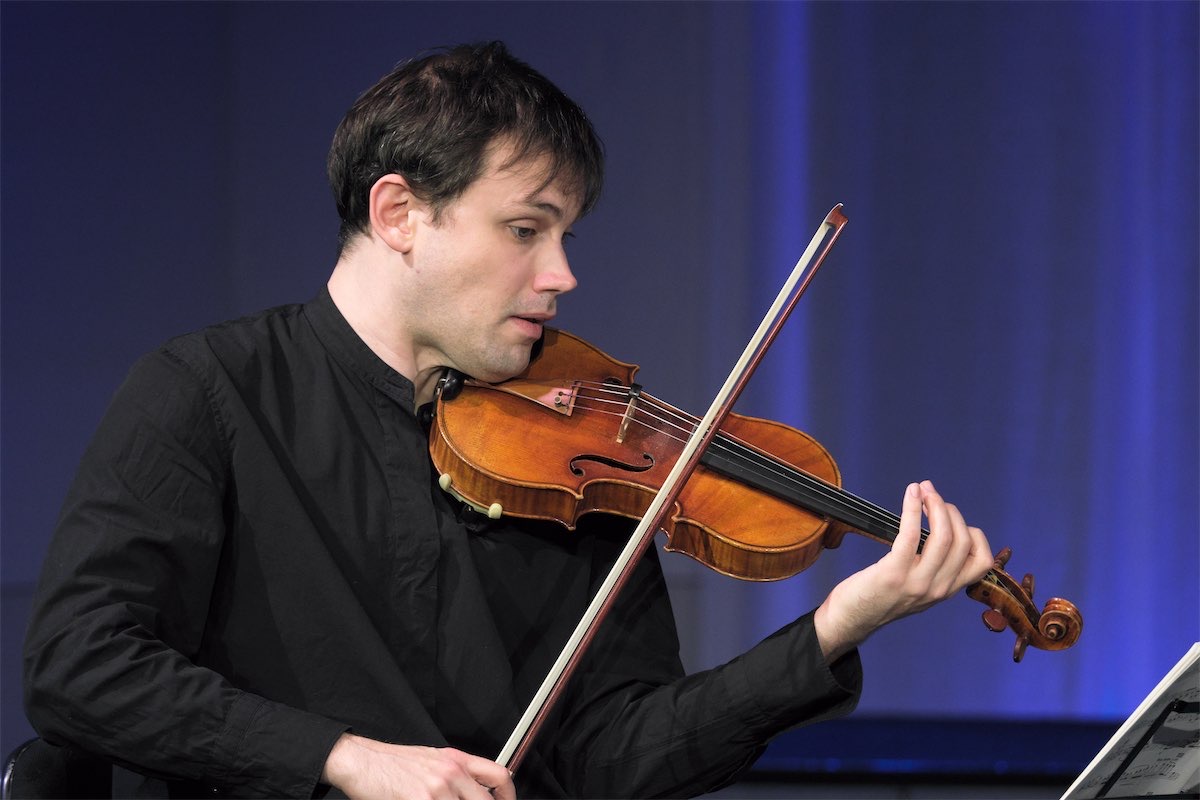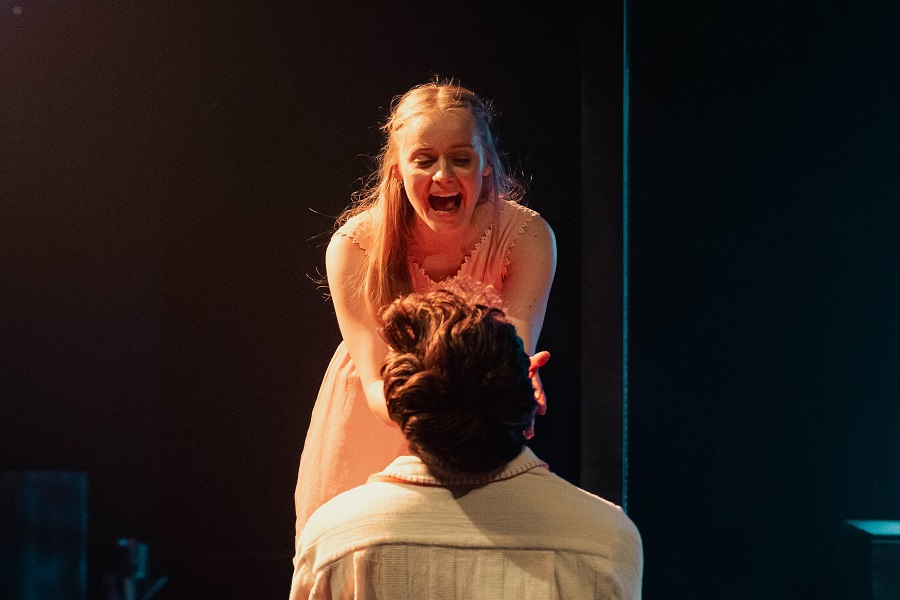
CIMF, Concert 21: “Blue Poles”. At James O. Fairfax theatre, May 8. Reviewed by LEN POWER.
WHEN the National Gallery bought American artist Jackson Pollock’s painting “Blue Poles” in 1973 for $A1.3 million, it caused a major furore.
To many observers, it looked like paint had just been dripped and chucked around on a canvas mindlessly and its purchase was definitely not considered to be a prudent use of tax dollars.
Today the painting remains one of the most treasured and priceless artworks in Australia.
The concert, “Blue Poles”, honoured the artist and the painting with three music works. It began with a short 2019 video directed by Alison Chernick to refresh our memory about the painting, its purchase and its notoriety.
Because native American art caught Pollock’s early attention and remained an inspiration in his work, it was an inspired idea that the music part of the concert should commence and end with Matthew Doyle playing didgeridoo.
His expert playing created an Australian indigenous link and set the scene for the rest of the concert.
The Alma Moodie String Quartet of Kristian Winther (violin), Anna Da Silva Chen (violin), Alexina Hawkins (viola) and Thomas Marlin (cello) then took the stage for three works – one inspired by Pollock’s painting, one that attracted its own controversy and one that is reminiscent of the painting and its period.
The first item, “Andante for Strings”, by American Ruth Crawford-Seeger was composed in 1931 and is arguably her best known work. The piece’s long melodic line that moves from instrument to instrument gives it a distinctive rise and fall that builds to a dramatic crescendo. It has been described as “a very slow drip”. The quartet gave it a fine performance.
The second item, John Cage’s work, 4’33”, is no stranger to controversy. It is written for any instrument or combination of instruments. It has three movements totalling four minutes and thirty-three seconds and the score instructs performers not to play their instruments for the entire duration. As polarising as Pollock’s “Blue Poles”, this was the perfect concert for it. Whether it’s a joke or a serious work of art is up to the listener to decide.
The third work was a world premiere by Brian Howard entitled, “Blue Poles, String Quartet No 5”.
The work is abstract, dramatic, intense and unpredictable, just like Pollock’s painting. There is a sense of randomness and controlled chaos and it creates an enjoyable springboard for the imagination. It was played superbly by the quartet.
This was an excellent concert that gave an added insight into a well-known and often misunderstood painting by an artist who continues to grow in stature.
Who can be trusted?
In a world of spin and confusion, there’s never been a more important time to support independent journalism in Canberra.
If you trust our work online and want to enforce the power of independent voices, I invite you to make a small contribution.
Every dollar of support is invested back into our journalism to help keep citynews.com.au strong and free.
Thank you,
Ian Meikle, editor



![Evie Hudson is a woman with amnesia, who forgets the last 13 years. Piecing her life back together, she navigates the harsh realities of coercive control.
Evie is the leading character in local author @emmagreyauthor's second novel Pictures of You.
Her debut book, The Last Love Note, sold more than 100,000 books worldwide within a few months of being published last year.
“I think that using amnesia really helped [show the effects of coercive control] because she had that sense of being completely lost in her own life,” Emma says of her new work of fiction.
To read the full story and find out more about this fabulous local author and her latest novel, visit our website at citynews.com.au or click the link in our bio! 📚✒️
#canberra #local #canberralocals #canberralife #australia #author #localauthor #Picturesofyou #coercivecontrolisabuse #dvawareness #bestsellingauthor #canberraauthor #localnews #citynews](https://citynews.com.au/wp-content/plugins/instagram-feed/img/placeholder.png)
Leave a Reply